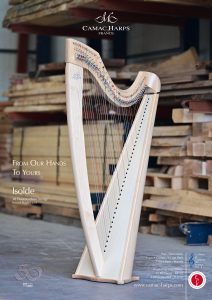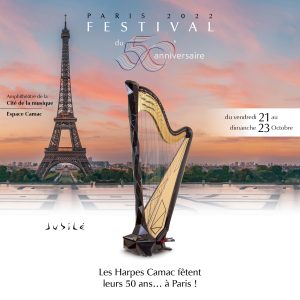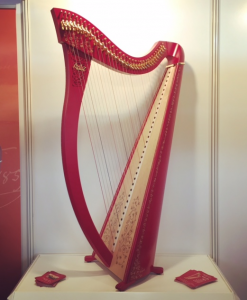Camac Blog
“A key to invisible locks”: Mandragore comes to the Espace Camac
Latest
November 16, 2024
We are delighted to invite you to the ‘Cordes de soie’ concert by the travelling harpist Mandragore. Mandragore takes us on a fabulous journey from Bosnia to Central Asia to share her adventures, her passion for Balkan and Oriental music, and her passion for the harp. Ahead of her appearance at the Espace Camac, we asked Mandragore about her background, her painstaking research and some real life adventures!
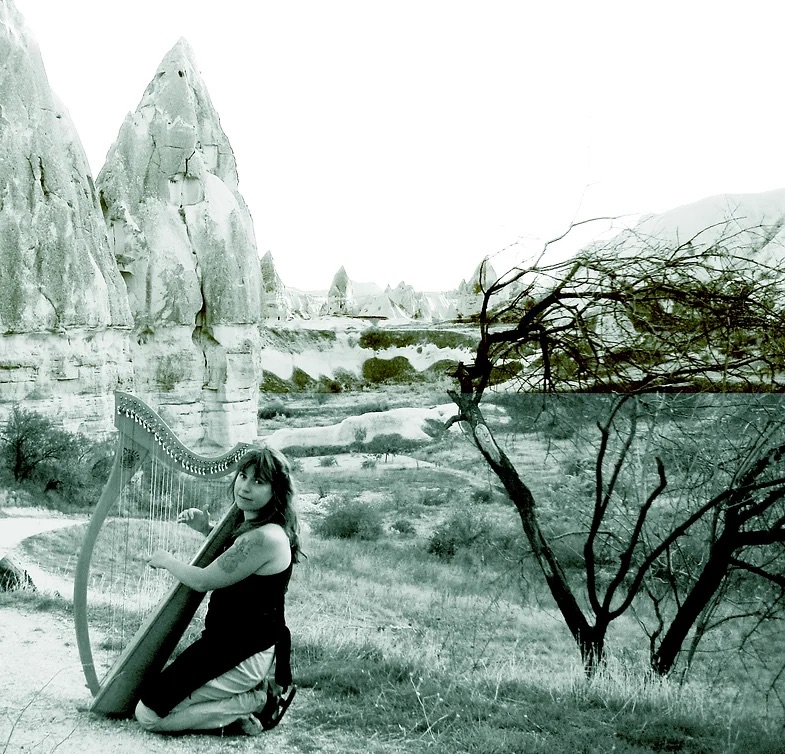
You’re a real traveller! Has it always been important to you as a musician to be able to move freely around the world? despite the fact that your instrument is the harp?
I inherited a certain love of travelling from my parents, but music pushed me to travel, as I’ve had a strong taste for traditional world music since I was young.
But I had a seminal experience when, at the age of 25, I had the chance to go and play in Gorazde, Bosnia (a small town that had suffered enormously from the war in Yugoslavia). When I was there, the experience of having my instrument with me when I travelled and what it could provoke in my encounters with people made me want to find ways of travelling with it (the converted van, in particular, and sometimes international solidarity between harpists).
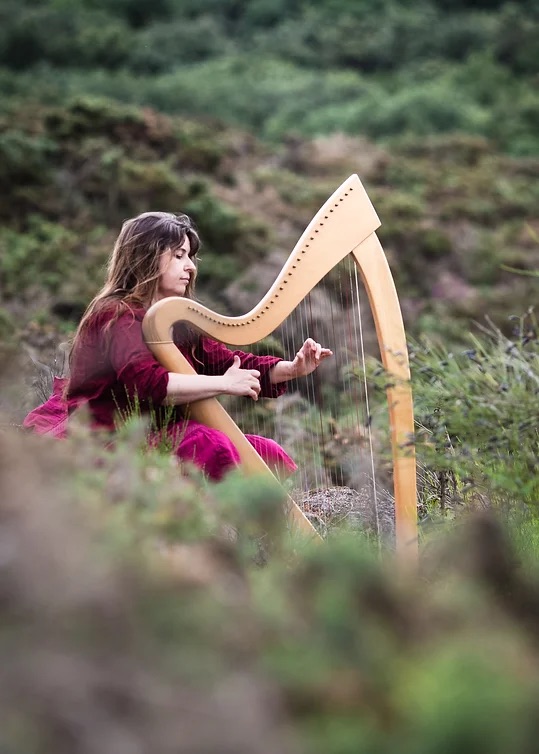
As any travelling musician knows, it’s always frustrating to be deprived of your instrument at times when you’re experiencing new things because, at such times, you’re often inspired or need to express your emotions through music, our language.
Your project, cordes de soie (Strings of silk), is a storytelling concert (linked to your album), retracing your adventures and letting us hear tunes and songs from the Balkans to Central Asia. It’s an eclectic journey, in terms of countries, genres and styles! How did your fascination with the music of the Silk Road come about?
Back in the 90s, I had already discovered some Near and Middle Eastern music through musicological collections (notably Ocora). Still, it was really in 2008 that I came across this music during another seminal journey along the Silk Road over a period of 7 months, which I recount in a comic strip entitled ‘Ipak Yoli, route de soi(e)’.
During this trip, my companion and I recorded a host of musicians along the way and during our encounters (aided by the presence of my harp Aziliz, which we carried in our van). From the Balkans to Central Asia, I found a musical universe that was new to me, a world where the former Ottoman Empire and the former Persian Empire have left their mark and where the music is mainly modal, in contrast to the harmonic structure of our Western music. I found a new way of approaching my instrument and my voice (as I am mainly a singer-harpist). It’s an approach that focuses more on ornamentation, improvisation and rhythm.
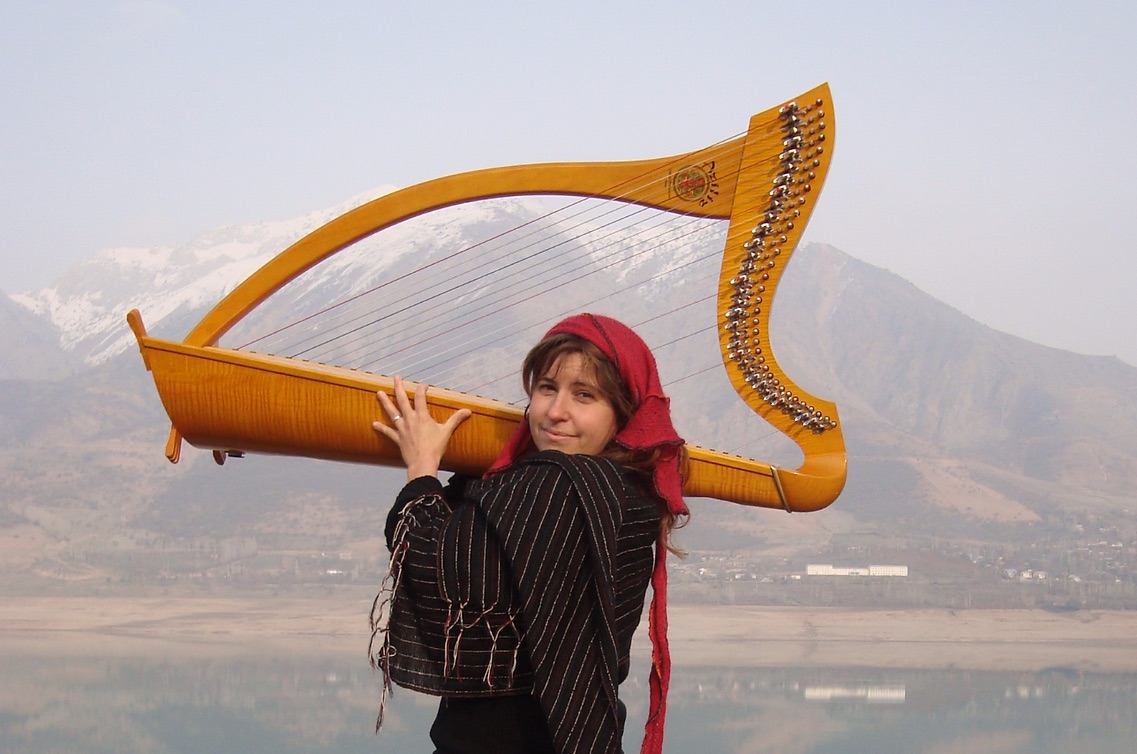
To coincide with the concert, Mandragore is also offering a free workshop on Saturday 23 November from 2pm. As part of your workshop in Paris, you will be talking about the Cheng – a regional instrument. How did you become interested in this instrument?
“The Cheng or Chang is, in fact, an instrument that crossed the Silk Road itself because a cousin of it can be found as far away as Japan (the kugo), and it was also very present in India (there are many representations of it in very old miniatures). I first discovered it in medieval miniatures from Uzbekistan, which was part of the Iranian empire at the time. Then I saw that the harp was everywhere in Ottoman representations until the 17th century. But it was an angular harp with an inverted shape compared to our Celtic model. Digging deeper, we come to Mesopotamian representations dating back to 2 millennia BC around the kingdom of Sumer.”
Turkish musicians Şirin Pancaroğlu and Fikret Karakaya have conducted extensive organological research to revive this instrument.
Tell me about one of your favourite adventures, travelling with the harp.
“There are lots, but if I had to choose one, it would be crossing the border into Iran. We didn’t have the paperwork to cross the border, and we didn’t have a permit to get past the lorry that wouldn’t let us in. We spent 24 hours at the border post, where we were asked to pay 500 euros to enter the vehicle, a sum we couldn’t afford.
Tired and depressed, we saw the end of our trip coming and were ready to give up.
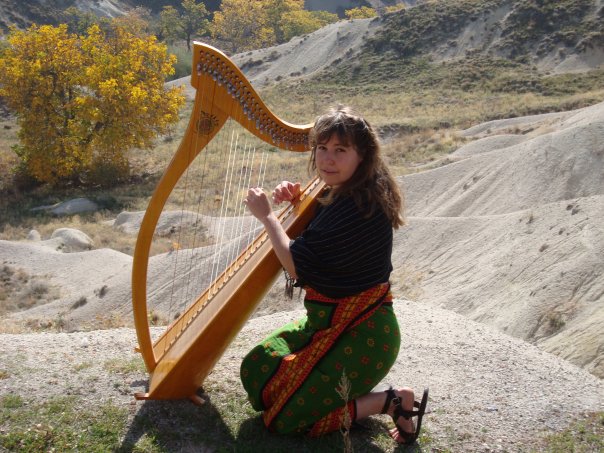
Mandragore and her harp near Sarakhs, Iran’s border with Turkmenistan.
But I had not reckoned on the importance of music in Iran, a country I hope you’ll discover one day. The border guards knew I was a harpist; we had shown them the instrument. After a semblance of a night at the station, the head of customs asked me if I could play for him and his colleagues in the morning.
I said yes, of course, even though I was very surprised because, in Iran, a woman is not allowed to play music alone in front of men (there must be a man playing with her).
The only quiet place to play was the safe room, which we shouldn’t have been allowed in, but that’s where I played my little concert in front of the fascinated customs officers.
After this impromptu performance, the chief customs officer whispered to us, ‘120 dollars?’ This meant that he was lowering the tax from 500 euros to 120 euros, or about 100 euros, for our passage. That’s how we ended up crossing the border into Iran.
That day, I learned that the harp was a key to opening invisible locks.”
For the concert, please note that booking is essential (in aid of the 1%HARP association):
https ://my.weezevent.com/cordes-de-soie-mandragore-en-concert-a-lespace-camac
Adults: €5 / Under 18s: €2 / Under 12s: free
To reserve your place in the workshop, click on the link below:

